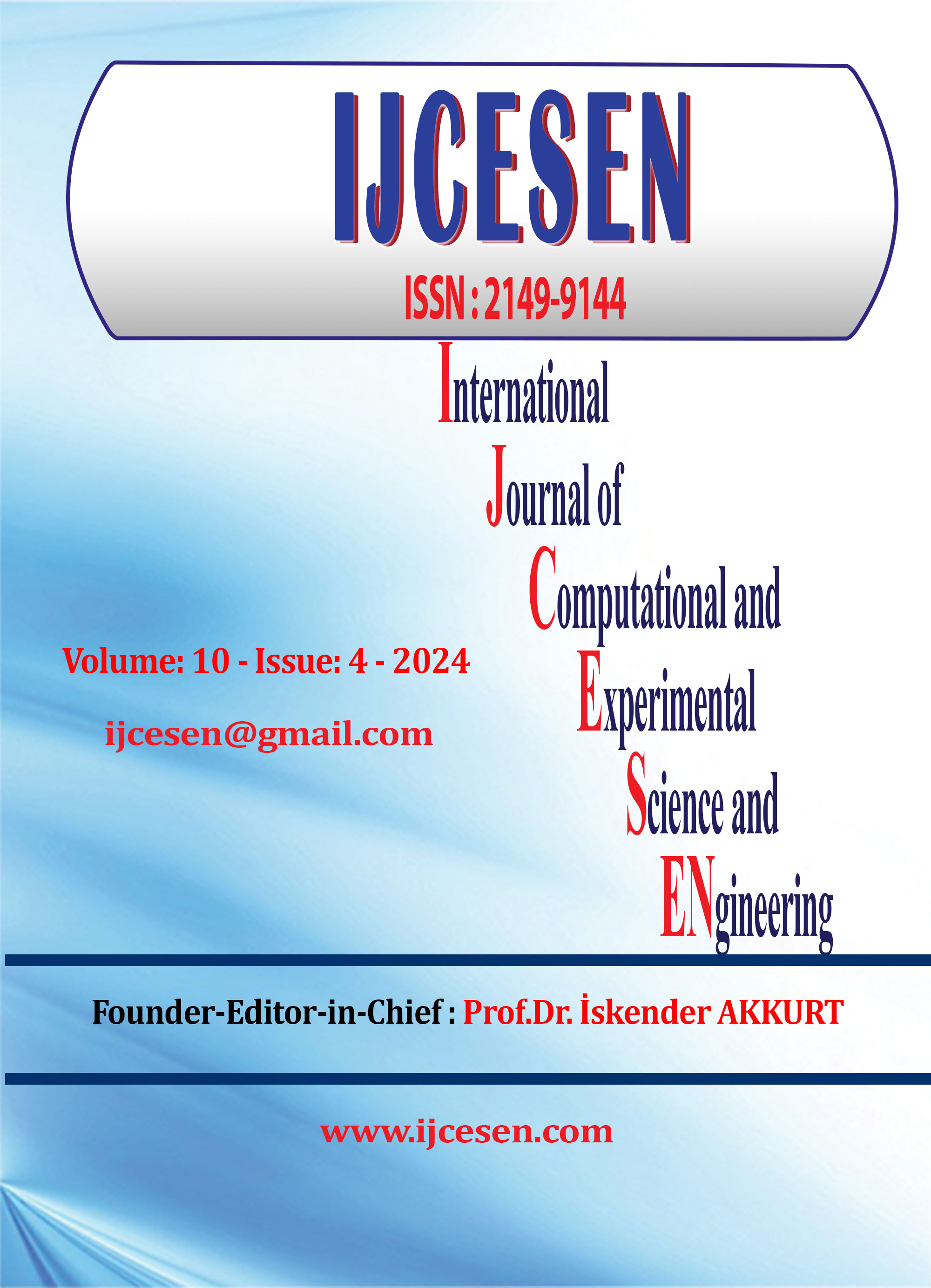Performance Analysis of Priority Generation System for Multimedia Video using ANFIS Classifier
DOI:
https://doi.org/10.22399/ijcesen.707Keywords:
Multimedia, video, priority, workflow, schedulingAbstract
The priority-based multimedia video transmission over the cloud system uses different bandwidth functioned multimedia video information which has been sent or transmitted to the cloud system through the priority selection system. This priority selection system uses machine learning algorithm for selecting the highest priority of the multimedia video and passes the multimedia video having the high priority to the cloud system. The proposed Workflow Computations and Scheduling (WCS) system using machine learning algorithm has consisted of three stages as preprocessing, feature computations with Principal Component Analysis (PCA) and Adaptive Neuro Fuzzy Inference System (ANFIS) classifier. The preprocessing stage of the proposed system is used to separate the frames from each multimedia video and the RGB frame has been converted into grey scale frame in this stage. The features are estimated from each grey scale frame and these features are scrutinized using PCA. The final scrutinized features are fed into ANFIS classifier to generate the priority results. The performance of the proposed WCS system has been analyzed in Amazon EC2 cloud environment with respect to Make Span (MS) and Execution Cost (EC).
References
Mohammadzadeh, M. H. Sabzalian, and W. Zhang, (2020). An interval type-3 fuzzy system and A new online fractional-order learning algorithm: theory and practice, IEEE Transactions on Fuzzy Systems, 28(9);1940–1950. doi: 10.1109/TFUZZ.2019.2928509 DOI: https://doi.org/10.1109/TFUZZ.2019.2928509
N. Manikandan, N. Gobalakrishnan, and K. Pradeep, (2022). Bee optimization based random double adaptive whale optimization model for task scheduling in cloud computing environment, Computer Communications, 187;35–44. https://doi.org/10.1016/j.comcom.2022.01.016 DOI: https://doi.org/10.1016/j.comcom.2022.01.016
X. Guo, (2021). Multi-objective task scheduling optimization in cloud computing based on fuzzy self-defense algorithm, Alexandria Engineering Journal, 60(6);5603–5609. DOI: https://doi.org/10.1016/j.aej.2021.04.051
C. Liu, K. Li, K. Li, and R. Buyya, (2021). A new service mechanism for profit optimizations of a cloud provider and its users, IEEE Transactions on Cloud Computing, 9(1);14–26. DOI: https://doi.org/10.1109/TCC.2017.2701793
J. Mei, K. Li, Z. Tong, Q. Li, and K. Li, (2019) Profit maximization for cloud brokers in cloud computing, IEEE Transactions on Parallel and Distributed Systems, 30(1);190–203. DOI: https://doi.org/10.1109/TPDS.2018.2851246
Kumarganesh. S and M.Suganthi, (2016), An Efficient Approach for Brain Image (Tissue) Compression Based on the Position of the Brain Tumor International Journal of Imaging Systems and technology, 26(4);237–242. https://doi.org/10.1002/ima.22194. DOI: https://doi.org/10.1002/ima.22194
J. Chen, K. Li, Z. Tang et al., (2017). A parallel random forest algorithm for big data in a spark cloud computing environment, IEEE Transactions on Parallel and Distributed Systems, 28(4);919–933. DOI: https://doi.org/10.1109/TPDS.2016.2603511
K. Li, C. Liu, K. Li, and A. Y. Zomaya, (2016). Zomaya: a framework of price bidding configurations for resource usage in cloud computing, IEEE Transactions on Parallel and Distributed Systems, 27(8);2168–2181. DOI: https://doi.org/10.1109/TPDS.2015.2495120
R. Sakthivel, R. Kavikumar, A. Mohammadzadeh, O. M. Kwon, and B. Kaviarasan, (2021). Fault estimation for mode-dependent IT2 fuzzy systems with quantized output signals, IEEE Transactions on Fuzzy Systems, 298(2);298–309. DOI: https://doi.org/10.1109/TFUZZ.2020.3018509
L. Imene, S. Sihem, K. Okba, and B. Mohamed,(2022) A third generation genetic algorithm NSGAIII for task scheduling in cloud computing, Journal of King Saud University - Computer and Information Sciences, 34(9);7515–7529. DOI: https://doi.org/10.1016/j.jksuci.2022.03.017
M. L. Chiang, H. C. Hsieh, Y. H. Cheng, W. L. Lin, and B. H. Zeng, (2023). Improvement of tasks scheduling algorithm based on load balancing candidate method under cloud computing environment, Expert Systems with Applications, 212;118714. DOI: https://doi.org/10.1016/j.eswa.2022.118714
Kumarganesh S and Suganthi. M, (2018), An Enhanced Medical Diagnosis Sustainable System for Brain Tumor Detection and Segmentation using ANFIS Classifier Current Medical Imaging (Formerly as Current Medical Imaging Reviews), 14(2);271-279. DOI: 10.2174/1573405613666161216122938. DOI: https://doi.org/10.2174/1573405613666161216122938
Naela Rizvi, Dharavath Ramesh, Lipo Wang, (2023). A Workflow Scheduling Approach With Modified Fuzzy Adaptive Genetic Algorithm in IaaS Clouds, IEEE Transactions on Services Computing, 16;872-885. DOI: https://doi.org/10.1109/TSC.2022.3174112
Neha Garg, undefined Neeraj, Manish Raj, Indrajeet Gupta, Vinay Kumar, G. R. Sinha, (2022). Energy-Efficient Scientific Workflow Scheduling Algorithm in Cloud Environment, Wireless Communications and Mobile Computing, 2022;1637614. https://doi.org/10.1155/2022/1637614 DOI: https://doi.org/10.1155/2022/1637614
P Tharani, AM Kalpana, (2021). An enhanced performance evaluation of workflow computing and scheduling using hybrid classification approach in the cloud environment”, Bulletin of the Polish Academy of Sciences. Technical Sciences 69(4); DOI:10.24425/bpasts.2021.137728 DOI: https://doi.org/10.24425/bpasts.2021.137728
L. Jia, K. Li, and X. Shi, (2021). Cloud computing task scheduling model based on improved whale optimization algorithm, Wireless Communications and Mobile Computing, 2021;4888154. DOI: https://doi.org/10.1155/2021/4888154
S. Kumarganesh, S. Anthoniraj, T.Senthil Kumar, P.Elayaraja, et al. (2022), A Novel Analytical Framework is Developed for Wireless Heterogeneous Networks for Video Streaming Applications Journal of Mathematics, 2022(1);1-7 https://doi.org/10.1155/2022/2100883 DOI: https://doi.org/10.1155/2022/2100883
Maheshwari, R.U., Kumarganesh, S., K V M, S. et al. (2024). Advanced Plasmonic Resonance-enhanced Biosensor for Comprehensive Real-time Detection and Analysis of Deepfake Content. Plasmonics https://doi.org/10.1007/s11468-024-02407-0 DOI: https://doi.org/10.1007/s11468-024-02407-0
Maheshwari, R. U., Paulchamy, B., Arun, M., Selvaraj, V., & Saranya, N. N. (2024). Deepfake Detection using Integrate-backward-integrate Logic Optimization Algorithm with CNN. International Journal of Electrical and Electronics Research, 12(2);696-710. DOI: https://doi.org/10.37391/ijeer.120248
Maheshwari, R. U., & Paulchamy, B. (2024). Securing online integrity: a hybrid approach to deepfake detection and removal using Explainable AI and Adversarial Robustness Training. Automatika, 65(4);1517-1532. DOI: https://doi.org/10.1080/00051144.2024.2400640
Downloads
Published
How to Cite
Issue
Section
License
Copyright (c) 2024 International Journal of Computational and Experimental Science and Engineering

This work is licensed under a Creative Commons Attribution 4.0 International License.





